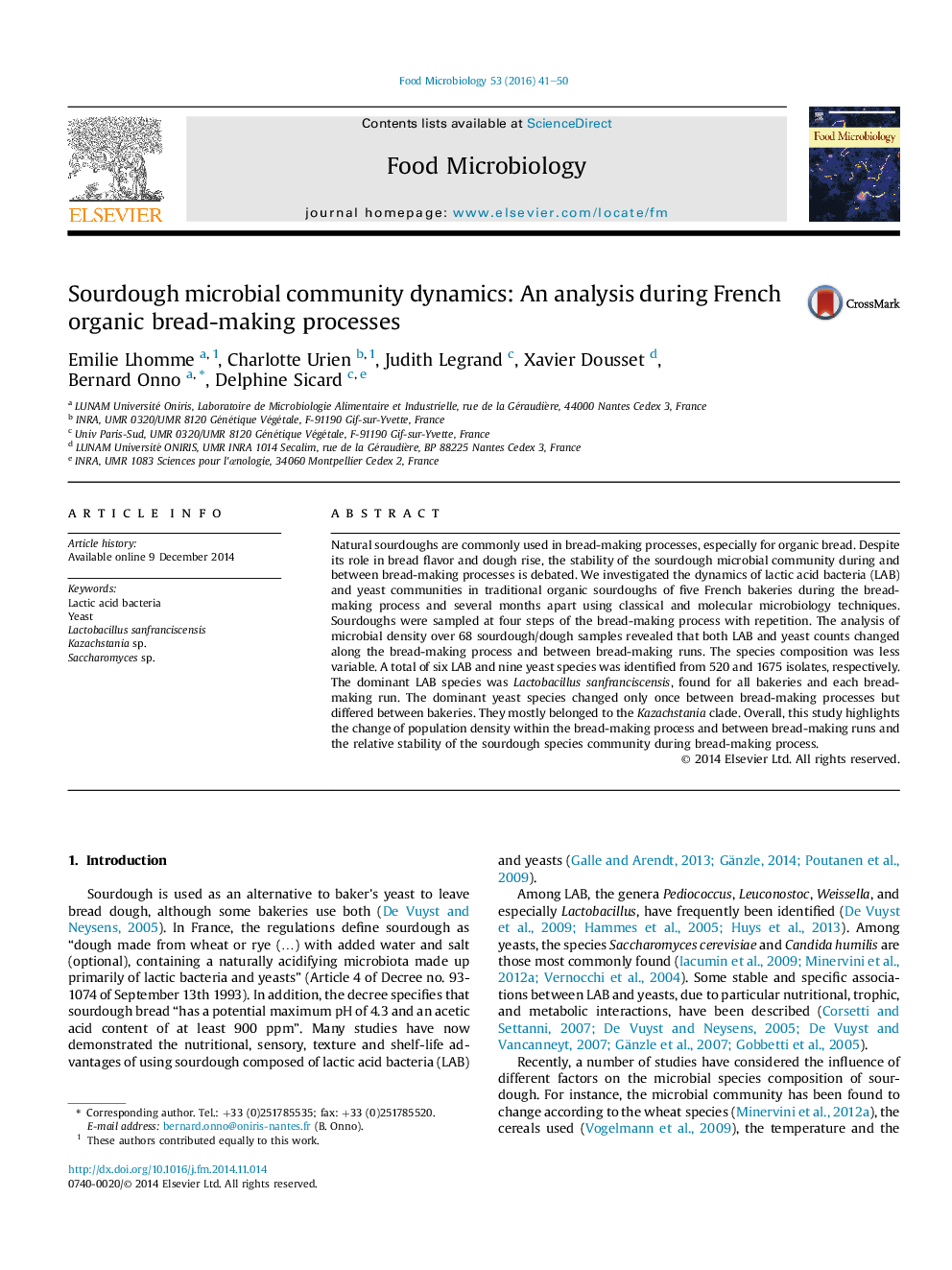| Article ID | Journal | Published Year | Pages | File Type |
|---|---|---|---|---|
| 4362696 | Food Microbiology | 2016 | 10 Pages |
•First description of microbial dynamics during sourdough bread-making process.•Predominance of Lactobacillus sanfranciscensis in organic sourdough analyzed.•Higher diversity in yeast species than in lactic acid bacteria species.•High occurrence of Kazachstania species.
Natural sourdoughs are commonly used in bread-making processes, especially for organic bread. Despite its role in bread flavor and dough rise, the stability of the sourdough microbial community during and between bread-making processes is debated. We investigated the dynamics of lactic acid bacteria (LAB) and yeast communities in traditional organic sourdoughs of five French bakeries during the bread-making process and several months apart using classical and molecular microbiology techniques. Sourdoughs were sampled at four steps of the bread-making process with repetition. The analysis of microbial density over 68 sourdough/dough samples revealed that both LAB and yeast counts changed along the bread-making process and between bread-making runs. The species composition was less variable. A total of six LAB and nine yeast species was identified from 520 and 1675 isolates, respectively. The dominant LAB species was Lactobacillus sanfranciscensis, found for all bakeries and each bread-making run. The dominant yeast species changed only once between bread-making processes but differed between bakeries. They mostly belonged to the Kazachstania clade. Overall, this study highlights the change of population density within the bread-making process and between bread-making runs and the relative stability of the sourdough species community during bread-making process.
